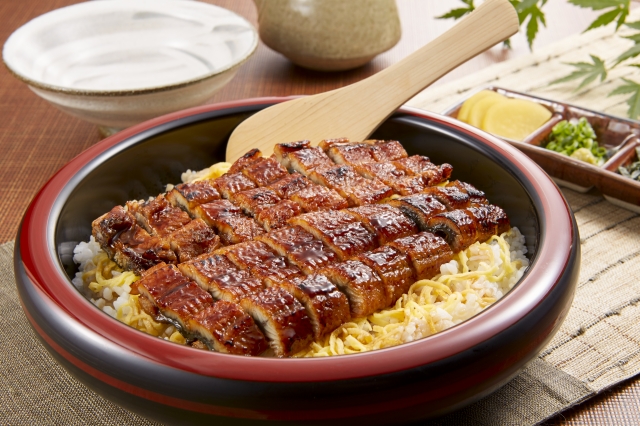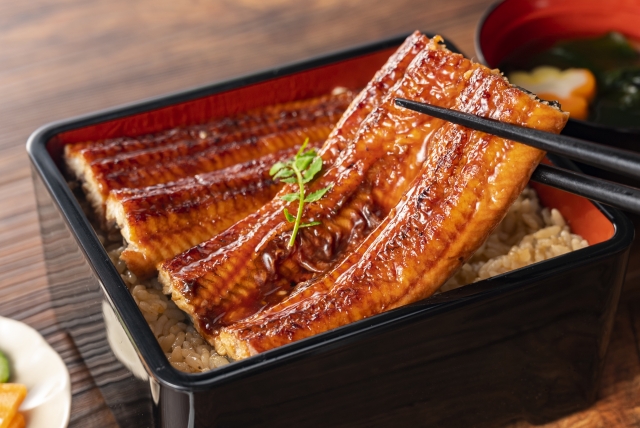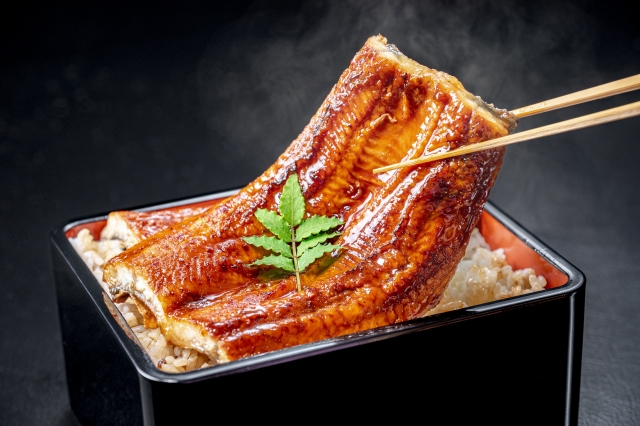Few culinary experiences capture the spirit of Japan as vividly as unagi, freshwater eel, grilled slowly over charcoal and glazed with a lacquer-like sauce. Served on rice as the iconic unajū or unadon, it is a dish that blends nourishment, artistry, and ritual. To encounter unagi in Japan is to trace a thread that runs through centuries of cultural history, dining etiquette, and seasonal sensibility.
Contents
A Millennium of Tradition

The story of unagi is as old as Japan’s recorded history. In the 8th century, the Man’yōshū—the nation’s earliest anthology of poetry—mentions eel as a restorative food. During those times, it was consumed for strength and survival, particularly in humid summers when the body was most fatigued.
Yet it was not until the Edo period (1603–1868) that unagi took on its present-day cultural significance. Edo was a thriving city of merchants, artisans, and literati, where food was not just sustenance but a marker of social identity. Street stalls and riverside eateries began serving grilled eel, transforming a once-humble river catch into a delicacy sought by urban sophisticates. The dish became associated with energy and vitality, aligning with Japan’s cultural emphasis on seasonal living.
A clever marketing campaign by Edo-era scholars further immortalized the tradition of eating unagi on the Doyō no Ushi no Hi—the “Day of the Ox” in midsummer. What began as a recommendation to restore stamina became a yearly ritual, binding culinary pleasure to seasonal awareness in a way that still resonates today.
The Craft of Preparation: A Culinary Art Form
Unlike European traditions of smoking eel or Chinese methods of braising, Japanese unagi preparation is defined by discipline, subtlety, and reverence for detail.

- Regional Styles: In Tokyo (Kantō), chefs slit the eel along the back, steam it to soften the flesh, then grill it gently over binchōtan charcoal, layering sauce between each stage. This produces a refined, almost ethereal texture. In Osaka (Kansai), the eel is cut along the belly, grilled directly without steaming, resulting in a crisp, bold character that reflects the Kansai palate.
- The Sauce, or Tare: Each restaurant guards its recipe like a family heirloom. The sauce is never replaced but replenished, deepening over decades into a flavor that embodies continuity. To taste an aged tare is to taste time itself, distilled into sweetness and umami.
- The Grill: Binchōtan charcoal burns hotter and cleaner than ordinary charcoal, imparting a delicate smokiness without overwhelming the eel’s natural richness. The act of grilling is a performance: the rhythmic fanning, the sizzle of fat meeting flame, the aroma wafting through the air.
This combination of precision and poetry elevates unagi from mere food to a culinary ceremony, where patience and skill transform a humble freshwater fish into a gastronomic treasure.
Symbolism and Aesthetic Value
Beyond flavor, unagi carries symbolic weight. It is a food of renewal, strength, and luxury. In a society attuned to mono no aware—the awareness of life’s fleeting beauty—unagi encapsulates the balance of indulgence and transience.

The presentation of unagi in a lacquered box (unajū) is itself a gesture of refinement. The glossy black or vermilion surface contrasts with the glistening eel, creating a harmony of textures and colors. For the diner, opening the lid is akin to unveiling a work of art. This interplay between food and vessel reflects Japan’s philosophy that a meal is an aesthetic experience, not just a taste sensation.
Discovering the Best Unagi in Japan
For discerning travelers, the pursuit of exceptional unagi is a journey worth taking.
- Tokyo: Historic institutions in Nihonbashi and Ueno have been serving unagi for centuries, some tracing their lineage back to the Edo period. Their sauces may be as old as the establishment itself.
- Kyoto: Here, the elegance of unagi is heightened by the city’s traditional atmosphere, often served in serene wooden townhouses where the pace slows and time feels suspended.
- Nagoya: Known for hitsumabushi, a local specialty where unagi is enjoyed in three stages: plain, with condiments, and finally with broth poured over rice. It is a culinary narrative in miniature, allowing the diner to savor progression and transformation within a single meal.

When choosing a restaurant, look for subtle signs of quality: discreet entrances, minimalist interiors, menus with few offerings, and chefs who cook each order individually. In Japan, true luxury often hides in understatement.
Etiquette and How to Savor
Part of the allure of unagi lies in the ritual of eating. In fine establishments, guests are expected to take their time, appreciating the fragrance before the first bite. Common accompaniments include kimosui—a clear soup with eel liver—and delicate pickles that cleanse the palate between mouthfuls.
Pairings matter. A dry sake highlights the caramelized edges of the eel, while green tea refreshes the senses. Increasingly, sommeliers recommend Japanese white wines with crisp minerality, aligning the dish with global dining sophistication.
For travelers new to unagi, the experience is best approached with openness. Do not rush. Allow the meal to unfold as a performance—an interplay of taste, texture, and tradition.
More Than a Meal, a Cultural Encounter

To taste unagi in Japan is to enter a dialogue with history. It is to experience Edo’s bustling streets, Kyoto’s refined tea culture, and Nagoya’s inventive spirit—all distilled into a single dish. It is nourishment for both body and mind, a reminder of how Japan transforms the simplest ingredients into profound expressions of identity.
For the sophisticated traveler, unagi offers more than culinary pleasure. It is an invitation to understand Japan’s philosophy of seasonality, its devotion to craftsmanship, and its artistry in elevating everyday life into something transcendent.
In a world where luxury often means excess, unagi reminds us that true indulgence lies in restraint, refinement, and reverence for tradition. To enjoy unagi in Japan is not merely to eat—it is to witness history, taste culture, and savor the quiet grandeur of a nation that turns food into art.

